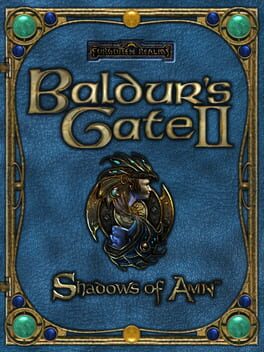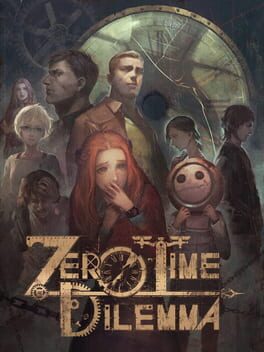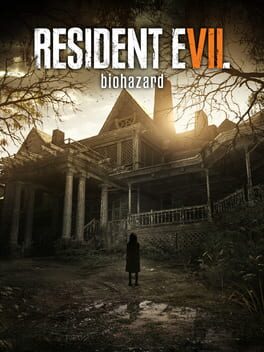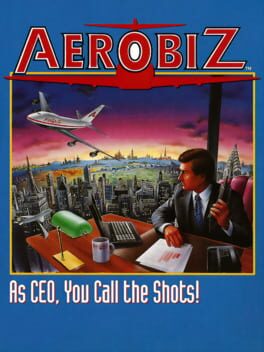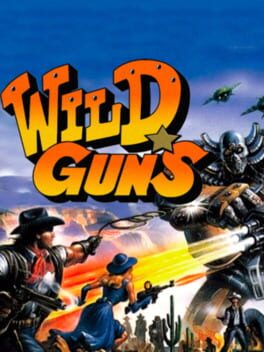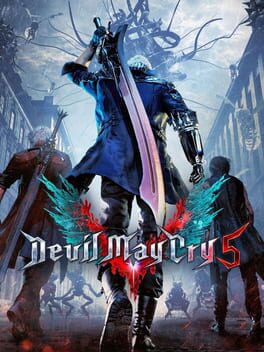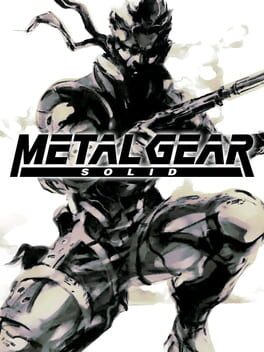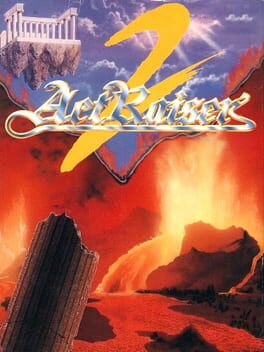2017
If you had a dream for an entirely original game concept, how much would you be willing to compromise your vision for more sales? If it was possible to quantify such a thing, imagine that making it more appealing to the mainstream by 5% would also increase reception and sales by 5%. Would you stick to your guns and create a completely uncompromised game, even if it meant a Metacritic score of 50? Maybe making it just a little easier or a little more direct would be enough, just so you get to the 70 range and a trickle of word-of-mouth sales. It wouldn’t be a best-seller, but if someone was interested enough to buy it, they would be likely to finish the game with a positive experience.
Rain World decided not to compromise even 1%. This game wants to make a statement about nature, and saw the tiniest bit of compromise to make it fair or predictable as antithetical to the message. For starters, you play as a lonely Slugcat, a defenseless rodent trying to locate the rest of its kind in a journey across an industrial zone overtaken by nature. While predators can snap you up in one bite and machines can crush you effortlessly, all you’re able to do is pick up stuff, throw items, climb, and eat. Your journey is a progression from water lock to water lock, hiding each night from a torrential flood of rain which also kills you instantly. To not starve in the middle of the night, you need to have at least four stocks of food, and surviving a night increases your progression meter by one. Filling this meter to a certain level is required to open the doors between the major areas, but dying means the loss of two levels. This means that to progress to a new area, you have to scour for food sources on a time limit while avoiding unpredictable instant-kill predators and any mistake means you have to repeat the process at least two more times. Once you get to a new area, there isn’t always an immediate water lock, so you have to quickly explore and avoid the new predators after spending most of your time just entering the area in the first place. While those are just the basics, it gives a taste of just how brutal the survival in this game is. I quit the game three times before pushing myself to finish it, and even then I wasn’t exactly having fun.
The reason I'm belaboring the point of just how little fun I had in this uncompromising murderscape is twofold: firstly, to let you know what you’re getting into if you do decide to buy it, which you just might when you hear that secondly, all the pain was worth it. It all paid off. The slow reveal of the game’s themes was absolutely magical. The ending was a perfect mesh of story and gameplay satisfaction, where I felt like I accomplished something and really learned something. It’s the most satisfied I’ve ever felt when completing a game in my entire life. It’s probably going to end up in my top ten games of all time. If all this sounds intriguing to you, and you think you can handle the pain, I’ll be cheering for you every step of the way. Stay dry, Slugcat.
Rain World decided not to compromise even 1%. This game wants to make a statement about nature, and saw the tiniest bit of compromise to make it fair or predictable as antithetical to the message. For starters, you play as a lonely Slugcat, a defenseless rodent trying to locate the rest of its kind in a journey across an industrial zone overtaken by nature. While predators can snap you up in one bite and machines can crush you effortlessly, all you’re able to do is pick up stuff, throw items, climb, and eat. Your journey is a progression from water lock to water lock, hiding each night from a torrential flood of rain which also kills you instantly. To not starve in the middle of the night, you need to have at least four stocks of food, and surviving a night increases your progression meter by one. Filling this meter to a certain level is required to open the doors between the major areas, but dying means the loss of two levels. This means that to progress to a new area, you have to scour for food sources on a time limit while avoiding unpredictable instant-kill predators and any mistake means you have to repeat the process at least two more times. Once you get to a new area, there isn’t always an immediate water lock, so you have to quickly explore and avoid the new predators after spending most of your time just entering the area in the first place. While those are just the basics, it gives a taste of just how brutal the survival in this game is. I quit the game three times before pushing myself to finish it, and even then I wasn’t exactly having fun.
The reason I'm belaboring the point of just how little fun I had in this uncompromising murderscape is twofold: firstly, to let you know what you’re getting into if you do decide to buy it, which you just might when you hear that secondly, all the pain was worth it. It all paid off. The slow reveal of the game’s themes was absolutely magical. The ending was a perfect mesh of story and gameplay satisfaction, where I felt like I accomplished something and really learned something. It’s the most satisfied I’ve ever felt when completing a game in my entire life. It’s probably going to end up in my top ten games of all time. If all this sounds intriguing to you, and you think you can handle the pain, I’ll be cheering for you every step of the way. Stay dry, Slugcat.
2002
The Resident Evil series was in trouble around the time of this game’s release. While the first three installments had been massive successes, the subsequent games weren’t so lucky. Resident Evil 3 was followed up by Resident Evil Survivor, a terrible light-gun game which wasn’t actually compatible with a light gun in the American release. Code Veronica was well-received, but didn’t sell well given that it was a Dreamcast exclusive at the time. Resident Evil Gaiden was awful, another light gun game came out to minimal fanfare, and the Gamecube Remake was similar to Code Veronica in its positive reception and low sales. Clearly, something had to be done to rejuvenate the franchise and address the critiques that had stuck to the franchise since the first installment. Firstly, item boxes had to go. Critics always hated the backtracking to put away items, so this game allows you to drop items and manage inventory on the fly. Basic zombies are less common now that people had started getting tired of them. Your carry capacity has also been doubled, as a result of this game’s flashy hook of controlling two characters at once. The first of the two is Rebecca Chambers, a combat medic who will be familiar to those who have played the first game. Her focus is on healing and puzzle solving, when her new partner Billy Coen is more experienced with combat. He has more health and deals more damage, but can’t mix chemicals or herbs, so swapping characters and intelligently splitting supplies is key. Controlling both at the same time is emblematic of how the game’s goal seems to be to combine the survival horror and action oriented tones of the franchise, retaining a Resident Evil identity while streamlining it in key ways.
That was the theory, in any case. Resident Evil 0 is a perfect example of how you can design something that sounds brilliant on paper, but it won’t succeed without understanding the reality of player psychology. Having an inventory system where you can just pick up and drop items to maintain flow sounds great, but would players actually leave stuff behind scattered across the map? Most wouldn’t, and would instead deposit non-critical items in a centralized location for later. Would players split up the team to cover more ground? Probably not, you can still only control one character at a time, and leaving a character alone leaves them open for attack. Billy is also so much stronger than Rebecca that you’ll want to use him for all the combat encounters you can. To encapsulate both these issues at once, it’s commonly recommended to just throw Rebecca’s gun in the trash because she’s weak and you’ll be coming across so many items to ferry from place to place that having an extra slot can save you a lot of time. The measures meant to streamline the experience ended up making it clunkier and slower, and the rest of the game definitely wasn’t good enough to make up for it. The enemies which took the place of zombies are frustrating to deal with, and all the locations after the intro are rehashes of areas seen in previous games. You couldn’t even go into this looking for an interesting story, seeing as it’s a prequel set immediately prior to the events of the first game. Each time the game tried to add a twist, it just made the game less satisfying. It’s a shame that this was the last classic-style Resident Evil, because it’s not a high note to go out on. It’s best to imagine that Resident Evil 0 came out before the remake of the first game, so it can be enjoyed as an interesting but flawed iteration that set up the true swan song of the genre.
That was the theory, in any case. Resident Evil 0 is a perfect example of how you can design something that sounds brilliant on paper, but it won’t succeed without understanding the reality of player psychology. Having an inventory system where you can just pick up and drop items to maintain flow sounds great, but would players actually leave stuff behind scattered across the map? Most wouldn’t, and would instead deposit non-critical items in a centralized location for later. Would players split up the team to cover more ground? Probably not, you can still only control one character at a time, and leaving a character alone leaves them open for attack. Billy is also so much stronger than Rebecca that you’ll want to use him for all the combat encounters you can. To encapsulate both these issues at once, it’s commonly recommended to just throw Rebecca’s gun in the trash because she’s weak and you’ll be coming across so many items to ferry from place to place that having an extra slot can save you a lot of time. The measures meant to streamline the experience ended up making it clunkier and slower, and the rest of the game definitely wasn’t good enough to make up for it. The enemies which took the place of zombies are frustrating to deal with, and all the locations after the intro are rehashes of areas seen in previous games. You couldn’t even go into this looking for an interesting story, seeing as it’s a prequel set immediately prior to the events of the first game. Each time the game tried to add a twist, it just made the game less satisfying. It’s a shame that this was the last classic-style Resident Evil, because it’s not a high note to go out on. It’s best to imagine that Resident Evil 0 came out before the remake of the first game, so it can be enjoyed as an interesting but flawed iteration that set up the true swan song of the genre.
What’s striking about Baldur’s Gate 2 is just how modern of an RPG it feels like, even when it’s over twenty years old. The narrative focus isn’t on the main plot, but in the ways the diverse cast of characters grow over the course of their adventure. Doing side quests is encouraged with all the contextual dialog from your companions, so players explore the world and build relationships with the party naturally. Then, when you start focusing on the main storyline, their reactions to events are contextualized with the details they've confided in you over time. However, there’s a pretty big catch to all this, in that the game’s appeal relies on this cast of characters you may not actually like. This is where the veneer of objectivity in this review breaks down entirely, because I found all the companions' personalities to be way too outlandish. There's no way I could advocate for a blander, more homogenous set of characters, but stating that the characters got on my nerves is true to my experience. This particularly hurts the enjoyment of a CRPG, where the combat serves mostly as an expression of the team's growth, rather than a mechanical challenge in itself. So, if you’re the type of RPG player who loves chatting up and customizing companions in New Vegas or Mass Effect, you’ll be able to see why this game inspired two decades of RPG’s, but if you expect satisfying gameplay or a compelling central plot, it won't live up to the decades of hype.
2006
God Hand’s critical reception has become a notable moment in gaming history. IGN famously gave it a three out of ten, citing bland environments, repetitive enemies, and dumb humor as reasons why this was one of the worst action games ever produced. The game was so poorly received that it lead to the shuttering of Clover Studio, home to some of the most legendary talent in the industry like Hideki Kamiya and Shinji Mikami. Fans of action games still burn at the unfairness of it all, and will gladly take any opportunity to explain why God Hand is actually one of the coolest games ever.
I’m not an action game fan though, so I have to concede to both sides. I think that for a large amount of people, God Hand will legitimately be a three out of ten game. The environments are just as bland as IGN said, and the enemies are just as repetitive. The camera can be extremely annoying, and you’ll die repeatedly from times where it just wouldn’t move fast enough to show you what’s going on. The extreme difficulty can also be a massive turn-off, but this is a point that leads straight into my next thought, which is that this game kicks ass.
The important thing to realize about God Hand is that the intended experience is getting your ass kicked. In most games, death means you failed, but that's not the case in God Hand. This game has a dynamic difficulty system that’s put right in front of your face, and you can watch the meter ratchet up as you land attacks or dodge enemies. At the first level, you can beat up enemies easily and feel like a typical action game hero, but the fourth level is called Level Die for a reason. Enemies will block your combos and throw you off balance, with two hits being enough to send you back to the checkpoint. This enforces a pace where the game is always pushing you one step beyond your current limit, with death serving as a difficulty recalibration. The clarity of the system mitigates frustration, and it can be used to judge how effective your combo strategy is. The build-your-own-combo system seems like it would have a few setups that are objectively better than the rest, but this isn't the case. When checking out streams and let’s-plays, I was shocked at how differently everyone had set up their move list, a testament to how the system is perfectly balanced for anyone's unique style. Making changes and exploring the full potential of each move was incredibly satisfying when I could tell that the changes let me stay on Level Die longer than ever, even when it still meant I would die in under a minute. The frustration with repetitive death is mitigated with cathartic moments like unlocking special God Hand attacks, or in the beautifully absurd cutscenes which release some of the built up tension. I wish I could share some examples of some humorous or rad moments, but considering how rewarded I felt when beating a level and seeing more insanity unfold, I wouldn’t want to give any of it away. I implore that you try out this game, as it’s in my top 5 best games of the year, and there’s nothing out there like it. Play at least through the first boss, and if you aren’t charmed, then I’ll be satisfied that you gave it a good try. That’s what me and the designers have in common: we both want you to beat God Hand, and won’t let you quit until you've shown that you're truly doing your best.
I’m not an action game fan though, so I have to concede to both sides. I think that for a large amount of people, God Hand will legitimately be a three out of ten game. The environments are just as bland as IGN said, and the enemies are just as repetitive. The camera can be extremely annoying, and you’ll die repeatedly from times where it just wouldn’t move fast enough to show you what’s going on. The extreme difficulty can also be a massive turn-off, but this is a point that leads straight into my next thought, which is that this game kicks ass.
The important thing to realize about God Hand is that the intended experience is getting your ass kicked. In most games, death means you failed, but that's not the case in God Hand. This game has a dynamic difficulty system that’s put right in front of your face, and you can watch the meter ratchet up as you land attacks or dodge enemies. At the first level, you can beat up enemies easily and feel like a typical action game hero, but the fourth level is called Level Die for a reason. Enemies will block your combos and throw you off balance, with two hits being enough to send you back to the checkpoint. This enforces a pace where the game is always pushing you one step beyond your current limit, with death serving as a difficulty recalibration. The clarity of the system mitigates frustration, and it can be used to judge how effective your combo strategy is. The build-your-own-combo system seems like it would have a few setups that are objectively better than the rest, but this isn't the case. When checking out streams and let’s-plays, I was shocked at how differently everyone had set up their move list, a testament to how the system is perfectly balanced for anyone's unique style. Making changes and exploring the full potential of each move was incredibly satisfying when I could tell that the changes let me stay on Level Die longer than ever, even when it still meant I would die in under a minute. The frustration with repetitive death is mitigated with cathartic moments like unlocking special God Hand attacks, or in the beautifully absurd cutscenes which release some of the built up tension. I wish I could share some examples of some humorous or rad moments, but considering how rewarded I felt when beating a level and seeing more insanity unfold, I wouldn’t want to give any of it away. I implore that you try out this game, as it’s in my top 5 best games of the year, and there’s nothing out there like it. Play at least through the first boss, and if you aren’t charmed, then I’ll be satisfied that you gave it a good try. That’s what me and the designers have in common: we both want you to beat God Hand, and won’t let you quit until you've shown that you're truly doing your best.
Hoo boy. I love bad games because I get to drop any attempt at writing a good review.
So I really love the Zero Escape series. Nine Hours, Nine Persons, Nine Doors is in my top 10, and its sequel Virtue’s Last Reward was also pretty enjoyable. The great characters and interesting atmosphere got me enthusiastic for visual novels in general, and they’ve served as a constant source of creative inspiration. Then, this game comes along. It’s not even like it’s a straight-up horrible game, you still have some interesting decisions to make and a couple nice bits of drama, but it’s... all wrong. The best I can do is to have you picture what it would be like if your favorite video game series got shelved for years, then had a chance with one last game to wrap up the franchise for good. The developers then decided that with such a low budget, it would be best to make it a porn parody of the rest of the series. Everyone could have some laughs, some characters could bang, and the plot could be wrapped up all at once in a way that didn’t set fan expectations too high. That’s pretty much exactly what this game feels like. Old characters are brought back in an ultra-flanderized form, the animations are laughably bad, the story is full of holes, and the amount of nonsensical melodrama makes it feel like a critique of the worst parts of the previous entries. There were multiple points where I just sat there, laughing in total shock of what the hell I was looking at. I laughed enough that I could almost recommend the game to fans of the series for that alone, but I can’t in good conscious tell anyone that they would enjoy this game.
So I really love the Zero Escape series. Nine Hours, Nine Persons, Nine Doors is in my top 10, and its sequel Virtue’s Last Reward was also pretty enjoyable. The great characters and interesting atmosphere got me enthusiastic for visual novels in general, and they’ve served as a constant source of creative inspiration. Then, this game comes along. It’s not even like it’s a straight-up horrible game, you still have some interesting decisions to make and a couple nice bits of drama, but it’s... all wrong. The best I can do is to have you picture what it would be like if your favorite video game series got shelved for years, then had a chance with one last game to wrap up the franchise for good. The developers then decided that with such a low budget, it would be best to make it a porn parody of the rest of the series. Everyone could have some laughs, some characters could bang, and the plot could be wrapped up all at once in a way that didn’t set fan expectations too high. That’s pretty much exactly what this game feels like. Old characters are brought back in an ultra-flanderized form, the animations are laughably bad, the story is full of holes, and the amount of nonsensical melodrama makes it feel like a critique of the worst parts of the previous entries. There were multiple points where I just sat there, laughing in total shock of what the hell I was looking at. I laughed enough that I could almost recommend the game to fans of the series for that alone, but I can’t in good conscious tell anyone that they would enjoy this game.
It’s common for Resident Evil fans to discuss the series as if it’s two different series put together. Since the first three games form a survival horror trilogy, and the next three are almost entirely action oriented, mentally separating them has helped organize discussion and view the games by their own merits. With Resident Evil 7, a new trilogy may be beginning, with a more contemporary first-person style that references our current horror media. This means that it’s a great way for series newcomers to check out the franchise, but there have been a couple drawbacks with this style compared to the others. Resident Evil and Resident Evil 4 were each revolutionary enough to launch an entire genre, and bring a new type of horror experience to the world. Resident Evil 7 doesn’t have that ambition, and is content to build off the standard set by Outlast and Amnesia. It’s a well executed game overall, but there isn’t a moment that will take you by surprise with something totally original. However, seeing as this game is a response to the criticism that Resident Evil 6 was so action-packed that it lost the soul of the series, maybe a conservative approach is just what was needed to reorient the direction of the franchise. If Resident Evil 8 does something more interesting, I’ll look back on 7 fondly, but until then I’m left thinking it’s competent but ultimately bland.
2005
You can’t talk about The Witness without talking about John Blow, and you can’t talk about Killer 7 without talking about Suda 51. Well-known today as that quirky Japanese auteur developer, Killer 7 was the breakout game that established his unique style. His games commonly emphasize the visual spectacle of violence, otherworldly aesthetics, and incomprehensible plots about assassins. Describing the gameplay of Killer 7 will convey even more weirdness: it’s a nonlinear first person rail-shooter with seven playable characters. While the environments look like they would fit in a standard first person shooter, your character only moves forward and backward along a track, shooting enemies that get in your way as you find the collectibles needed for progression. It’s an odd system, but one that streamlines an experience that’s more about narrative atmosphere than gameplay. In fact, it’s streamlined to a fault. Your map shows every relevant location, where all the collectibles are located, and which character is needed in each location to surpass obstacles. The only real agency you have is in the shooting, which is kept fairly basic. The other giant caveat that I’ve alluded to is that the game is about the focus on narrative atmosphere rather than a coherent plot. This is a game for people who appreciate stories where you can form your own opinion or create your own closure, interpreting the emotions of scenes rather than a strict telling of events. I’m finding it hard to describe the appeal here, which is the best summary of why people should give it a try. It’s not so solidly designed that I would say I generally recommend it, and I think even the people who would be interested might bounce off of it, but it’s just so intriguing that you should try it anyway. You never know when you’ll win the niche-appeal lottery and find your new favorite thing.
1992
Airport business. This is a simulator about airport business on the SNES.
I feel like I should just end the review there, but I need to say that this game actually delighted me. Being a simulator on such limited hardware meant the game couldn’t be too complicated, and the limited control scheme meant that it had to be accessible. Strategy games today often require lots of time investment to understand, and Youtube research is recommended, so this game was refreshing in how simple it was to pick up and how satisfying it was to learn on my own. Naturally, these limitations have the double-edge of not providing enough depth to satisfy for more than a couple playthroughs. If you’re into the simulation genre, it could be fun to check this out and see the nascent stages of a genre that’s grown so much. If you’re not, maybe it shouldn’t be this game specifically, but I recommend trying out a simulation game. I felt a real sense of accomplishment with growing my business, a type of strategic satisfaction that puzzle games and war games never quite provided. Expand your horizons!
I feel like I should just end the review there, but I need to say that this game actually delighted me. Being a simulator on such limited hardware meant the game couldn’t be too complicated, and the limited control scheme meant that it had to be accessible. Strategy games today often require lots of time investment to understand, and Youtube research is recommended, so this game was refreshing in how simple it was to pick up and how satisfying it was to learn on my own. Naturally, these limitations have the double-edge of not providing enough depth to satisfy for more than a couple playthroughs. If you’re into the simulation genre, it could be fun to check this out and see the nascent stages of a genre that’s grown so much. If you’re not, maybe it shouldn’t be this game specifically, but I recommend trying out a simulation game. I felt a real sense of accomplishment with growing my business, a type of strategic satisfaction that puzzle games and war games never quite provided. Expand your horizons!
1994
If you were given a minute to write down every video game genre you could think of, there’s one I bet you would miss: the arcade port. It doesn’t even seem like a genre, as it doesn’t explicitly describe the gameplay, but arcade ports were big business in the early days of console gaming. Paying full price for something that can be beaten in an hour seems pretty bad to modern sensibilities, but when considering how arcade games were meant to be addictive and endlessly replayable, choosing an arcade port for one of the few games you could buy each year was a solid choice. This is the heritage of Wild Guns, a game that replicated the replayability and pace of arcade games in an entirely original title for consoles. It’s a straightforward shooting gallery, but the fun presentation is what makes me so quick to recommend it to people. It’s a beautiful pixel-art rendition of a cybernetic Old West, creating a level of energetic absurdity reminiscent of the Metal Slug series. The gameplay also has some nuance, with a system where you can shoot enemies’ bullets out of the air to charge up your special meter, granting you an Old West vulcan cannon when filled. To facilitate this system, you can always see where enemy shots are going to land, so the game feels entirely fair even when the challenge starts escalating. In this way, it’s a perfect merging of console and arcade difficulty sensibilities. Wild Guns is quick and addictive like an arcade game, without the need for token-taking difficulty spikes, making it sit comfortably near the top of my favorite SNES games of all time.
2019
Reviewing the fifth game in a series is of questionable usefulness. If you’re a fan, you’ve probably followed the game’s release to some degree, and if you’re not, the fifth entry is rarely the best point to jump in. While that sounds like a cop-out to not write anything helpful at all, I would still like to take the time to say that this game is sick as hell. I’ve beaten it five times and completed the 101 level challenge mode twice, and I keep it installed so I can jump back into it whenever I want. It’s a worthy entry in what is arguably the most celebrated action franchise of all time, bringing the best bits of each entry together into one explosive package. That should be enough to convince the Devil May Cry fans, so if you’re one of them, you can stop here. For everyone else…
Like I said above, the fifth entry is rarely the best place to enter a series, and this is no exception. There is some disagreement about that among fans, with some saying that the gameplay is such a focus that people should have no qualms skipping the story, but I disagree. While the story is simple, it was designed to satisfy the fans who have been patient enough to follow the series over its 18-year lifespan. Missing out on all that context will remove a lot of the charm from the game, and if you enjoy the combat alone, you probably would have enjoyed the previous entries as well. So, if the series interests you, pick up the HD collection on your platform of choice. The first game may feel a little old, but it’s polished enough to reward your patience. If you really can’t get past its age, Devil May Cry 3 is an improvement in every way, and is also a prequel, so you won’t feel lost. If both disappoint, you at least got to try out a legendary series for cheaper than diving straight into this game would be. If you end up loving them, you’ll be in a perfect place to appreciate everything 5 has to offer.
Like I said above, the fifth entry is rarely the best place to enter a series, and this is no exception. There is some disagreement about that among fans, with some saying that the gameplay is such a focus that people should have no qualms skipping the story, but I disagree. While the story is simple, it was designed to satisfy the fans who have been patient enough to follow the series over its 18-year lifespan. Missing out on all that context will remove a lot of the charm from the game, and if you enjoy the combat alone, you probably would have enjoyed the previous entries as well. So, if the series interests you, pick up the HD collection on your platform of choice. The first game may feel a little old, but it’s polished enough to reward your patience. If you really can’t get past its age, Devil May Cry 3 is an improvement in every way, and is also a prequel, so you won’t feel lost. If both disappoint, you at least got to try out a legendary series for cheaper than diving straight into this game would be. If you end up loving them, you’ll be in a perfect place to appreciate everything 5 has to offer.
1994
Mario games are the strongest influence on the platforming genre today, but it represents just one of many styles that have developed over time. Sonic games are the first alternate approach most would think of, but cinematic platformers were the clear inspiration for Donkey Kong Country. It utilizes some key sensibilities of the genre, prioritizing natural environments over readable ones, moody tracks over catchy loops, and limiting the amount non-diegetic elements on screen. One final similarity is in the difficulty, but this is where the strength of cinematic platforming turns into a traditional platforming weakness. In cinematic platformers, the difficulty is usually meant to enforce a deliberate pacing. You’re meant to feel like your life is actually on the line, and that you should carefully consider each move before making it. Donkey Kong’s implementation of that difficulty however sticks with Mario tradition, testing how well you can learn new level gimmicks. Just as you’re getting immersed in the atmosphere, brutally difficult level gimmicks break the flow and leave you wishing that the environments were more clearly defined. This means you can either interpret the game either as a traditional platformer that’s beautifully atmospheric, or as a cinematic platformer with bad pacing. With atmosphere being something I’m personally drawn to in games, I leaned towards the latter. The high difficulty of the later parts of the game let down what I felt were its best qualities, even though it still makes for an all-around decent game.
If Skyrim had an alternate title, a natural choice would be “Dragonborn”. The narrative surrounds the return of the destined hero, who follows in the footsteps of a mythical figure at the center of a religious conflict. Oblivion’s alternate title would be similar, with something like “Hero of Kvatch”. The quests focus less on the destiny of the hero and more on their heroic role in a variety of events. What I consider to be beautiful about Morrowind is that there isn’t a title that works nearly as well. Morrowind’s story is actually about Morrowind. Progressing through the main story slowly unravels the history of the land, the values of its people, and the goals of the organizations they created. I don’t want to give any spoilers past that, because I consider it to be the gold standard of story presentation in an open-world RPG. The only caveat is how dated every other element feels. The movement is incredibly slow, which makes the sparse map features feel even more spread out. Even in the later games the combat is lackluster, so the primitive implementation here feels especially stiff. It took me three or four tries to get past how dated some of the elements of this game are, but I’m glad I was eventually able to push through. If you’ve bounced off this game in the past, I recommend doing yourself a favor and trying again, even if that means installing a couple mods to smooth things out. Get the interface and movespeed just how you like it so you can appreciate a classic.
2000
While Metal Gear started out in 2D, this game came out two years after Metal Gear Solid, so it had to find a way to join the old style of gameplay with the new 3D cinematic presentation. Ghost Babel is somewhat successful in this regard, with a narrative that lives up to the series’ standard while maintaining adding to the stealth mechanics with some unique gadgets. However, even with fun tools, the stealth isn’t robust enough to support the level of backtracking the game relies on in the second half. The 3D games transition to action setpieces towards the end for this very reason, but the limitations of the Game Boy meant the potential for impressive cinematography was limited. While it makes for a remarkable achievement for the console, it’s probably not going to wow anyone other than series fans.
1993
While the term “action game” is well-defined for 3D games, it’s more nebulous for sidescrollers. There isn’t a landmark title that fills the role of Devil May Cry to separate the casual hack-and-slash games from the more demanding action titles. At least, there isn’t one that’s popularly accepted, because Actraiser 2 has enough depth and challenge to fill the role. At the start, you would be forgiven for thinking it’s a simple spin on the Castlevania formula with its plodding movement and combat, but the game will beat the shit out of you until begin appreciating the real capability of your moveset. It’s a fantastic example of character growth not being tied to a progression system, but through smartly designed challenges that prompt discovery of unobvious mechanics. To put it simply, there’s a reason the player character is called “The Master”. The hero of the story will be the person who pays attention and learns; everyone else will be destroyed.
1994
Umihara Kawase is a platformer centered around your ability to use an elastic fishing hook to navigate levels and defeat fish. That sounds simple, but the amount of nuance this hook requires is absolutely insane. Applying pendulum physics with a standard rope would already be tricky, so the movement and complexity created by its elasticity quickly pushes you to the limit. Luckily, the way you progress through the game is designed with that difficulty in mind. There are about 50 stages, but you only need to beat about 10 to finish the game. Most have multiple exits, so you can plan your route through based on the specific skills each one expects from you. You also start with ten lives, which will get blown through extremely quickly in your first couple hours, but feels generous once you get the hang of it. It can be frustrating at first, but it’s a great game to keep installed and visit when you have a few free minutes.


